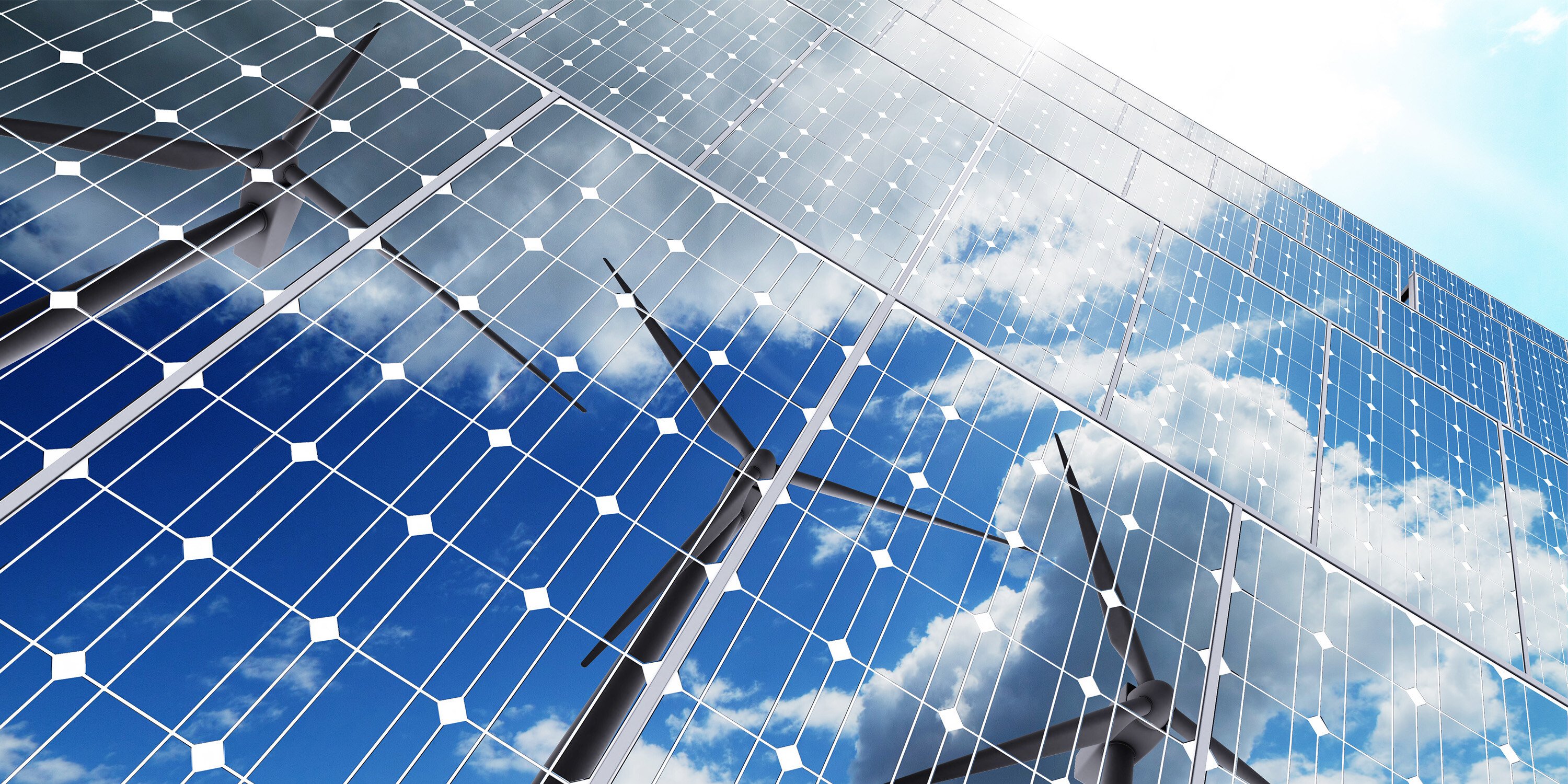Sustainability | March 6, 2024
The Role of AI in Facility Sustainability
Artificial intelligence (AI) is dominating headlines for good reason. The fast-evolving and broad technology category has edged into all corners of daily life and the industries that support it, from healthcare and finance to, increasingly, sustainably managing the buildings and other facilities where we live, work, and produce goods.
Some facilities management (FM) early adopters are already experimenting with AI-supported tools for optimizing energy use and powering carbon accounting. For most facility leaders though, it’s time to get up to speed on the opportunities — and risks — of AI in facility management and sustainability.
So, in this blog we’ll explore dual opportunities for positive change using AI in carbon accounting and building performance, the potential drawbacks and risks of these fast-evolving technologies, and a clear view of why humans are still essential to this equation.
What’s behind the buzz around AI in facility sustainability?
First, know that you’re right on time to this growing conversation. AI in facility management is relatively new. The buzz and interest around it are so high that earlier this year the International Facility Management Association (IFMA) released a statement addressing widespread interest as well as apprehension.
IFMA plans to offer guidance on near-term applications of AI in facility operations as well as the technology’s longer-term prospects as its capabilities advance. IFMA also responds head-on to worries about job security. “FM has become a data-driven industry,” noted Dean Stanberry, Chair of IFMA’s Global Board of Directors. “Basing decisions on incorrect data is far more worrisome than whether AI will take our jobs.”
Not that replacing humans is the only (or biggest) issue. As we’ll see later in this article, the risks of using AI range from data privacy concerns and model biases to cybersecurity risks.
Done right, though, AI-supported solutions offer the promise of supercharging your organization’s energy and sustainability practices, thanks to its ability to gather, process, and spot trends in operational data quickly and efficiently.
5 ways AI could support building energy performance, environmental monitoring, and sustainability
What’s possible for building energy management, environmental monitoring, and various forms of sustainability and carbon management, accounting, and reporting? Let us count the ways:
- AI for predictive maintenance: By combining machine learning and data mining from equipment sensors and other facility sources, AI algorithms can predict when maintenance will be needed, helping FM teams coordinate updates and repairs more efficiently, avert costly breakdowns and downtime, and ensuring building systems run as efficiently as possible.
- AI for occupancy detection and energy use prediction: Occupancy sensors are nothing new, but AI takes their use to another level. Using real-time occupancy data from sensors and cameras, an AI system can tell when and where areas of a building are occupied — and adjust lighting, HVAC, and other programming accordingly.
- AI for integrated energy optimization: Beyond occupancy, AI can help predict how much energy will be needed in any given building, at any given time… optimize energy use accordingly — such as trimming energy consumption during peak hours to reduce demand charges and overall utility bills. More sophisticated opportunities include AI-driven distributed energy resource management system (DERMS) that enables facility teams to orchestrate and optimize diverse energy assets, integrating virtual power plants, microgrid management, demand response, and more.
- AI for renewable energy integration: AI can help integrate renewable energy sources like rooftop and carport solar PV panels into buildings’ energy systems. By analyzing data on energy production and use, an AI model can favor using renewable energy sources over fossil-fuel energy sources when circumstances allow. For companies with onsite renewables generation, predictive analytics look at weather patterns like wind and sunlight to help determine peak generation times.
- AI for carbon management and accounting: AI can help accelerate and enhance carbon accounting and reporting across business activities and emission factors, supercharging accuracy while aligning with changing requirements — including tackling Scopes 1 and 2 operational emissions as well as upstream and downstream Scope 3 emissions. This is especially useful for otherwise manual and cumbersome data wrangling, such as mapping business activities to the right inputs to identify corresponding emission factors.
Potential drawbacks and risks of AI in facilities management
If potential pros abound to using AI in facility sustainability, so do potential drawbacks and risks. Let’s take a closer look at three of them:
- Upfront “data infrastructure” investment: AI-powered systems aren’t just hungry for data, they need data. Lots of it. Which begins with installing and integrating data infrastructure like smart meters and interconnected sensors throughout facilities, not to mention API integrations with various software platforms and data streams. Only 10–15% of buildings have the equipment or systems in place to gather the data it takes to support AI, according to the Wall Street Journal last year.
The data needs don’t stop there, either. Investing in AI for facility sustainability also extends far beyond upfront costs. It includes continual investment in data acquisition and storage; software licensing and updates; model training, monitoring, and maintenance; and finally, keeping personnel up to date on interacting with AI-driven systems. - Algorithm bias: This refers to AI-powered software mirroring — and then making suggestions or outright decisions based on — data information that reflects a skewed (i.e., biased) view of the world. For example, consider the historical data an AI-powered predictive maintenance system uses to train its algorithms. If maintenance records favored certain types of equipment or areas of a facility over others due to human bias or oversight, the AI algorithm might inadvertently prioritize maintenance for those areas or equipment — even if they aren’t the most critical — running the risk of degraded performance.
Other forms of bias might include geographic bias, vendor bias, or bias due to incomplete data. If AI is trained on data from a facility in one region, but then generalizes to facilities in other regions where conditions (e.g., climate, weather, humidity) are totally different and impact building performance in distinct ways, it can lead to flawed predictions. Or if a facility tends to use equipment from specific vendors, it might prompt the AI system to incorrectly prioritize maintenance for those vendors’ products over others — regardless of actual needs. Or if sensor data is missing or inaccurate due to sensor malfunction or poor calibration, it can yet again lead to faulty AI-based insights and decision-making predictions. - Cybersecurity: Maintaining your organization’s data privacy and security goals is another sensitive area. Like any other technology-centered system, AI strategy in FM can be susceptible to cyberattack. After all, AI systems require a lot of sensitive information — from building layouts and occupancy patterns to maintenance schedules — that, when breached, could be exploited for malicious purposes. They also rely on sensors and other Internet of Things (IoT) devices to collect data and manage building systems — any of which can be vulnerable to cyberattack, and if breached, used as an entry point to infiltrate AI systems and manipulate their behavior.
For example, without strong cybersecurity measures in place, a hacker could, say, tamper with predictive maintenance models, conjuring false alarms or hiding maintenance issues, and potentially leading to equipment failure or safety issues.
It’s still vital to have human experts in the driver's seat
Every facility sustainability journey is different. If you think AI solutions may be in your future, make sure whatever approach you take matches your organization’s unique priorities and values. But remember: it’s crucial that every application of AI in FM retains human experts in the proverbial driver’s seat.
At the end of the day, AI is a tool (albeit a new, exciting, and promising one) to support your facilities management. Like any tool, it requires the right expertise to use it appropriately, to maximize its potential, and to guard against its would-be pitfalls. Understanding how AI-powered energy and carbon management software can augment existing systems — and ensuring that they don’t undermine your efforts (or budget) by incorporating various biases and risks — is the key.
To learn more about harnessing human expertise and technology tools to accelerate sustainability in your facilities, contact a Mantis pro today.
Related Posts
Discover more content and insights from Mantis Innovation

In today’s AI era, human intelligence is the key to data center facility and energy optimization
Nowhere else in modern industry do artificial and human intelligence converge with such transformative potential as in the world of data centers. As AI's extraordinary growth accelerates demand for

Carbon Credits Explained: A Primer for Achieving Your ESG Goals
In the race to achieve net-zero emissions, carbon credits have become a crucial tool for companies with hard-to-abate emissions. As of 2024, almost half of the Fortune 500 companies have net zero

Five Trends Driving Data Center Facility Energy Optimization
Today’s digital economy, commercial and industrial digitalization, and the recent explosion in artificial intelligence and machine learning (AI/ML) powered computing are driving massive growth in

Modernizing Manufacturing Facilities: Practical Steps for Better Performance
In today's competitive manufacturing landscape, staying ahead requires more than maintaining the status quo. Modernizing facilities and operations is essential for improving efficiency, performance,